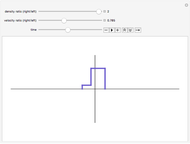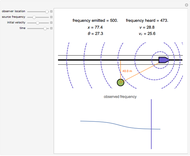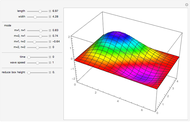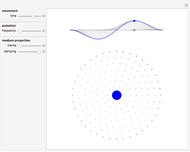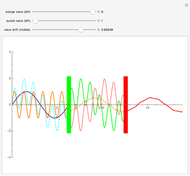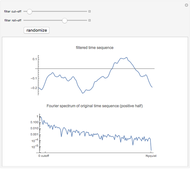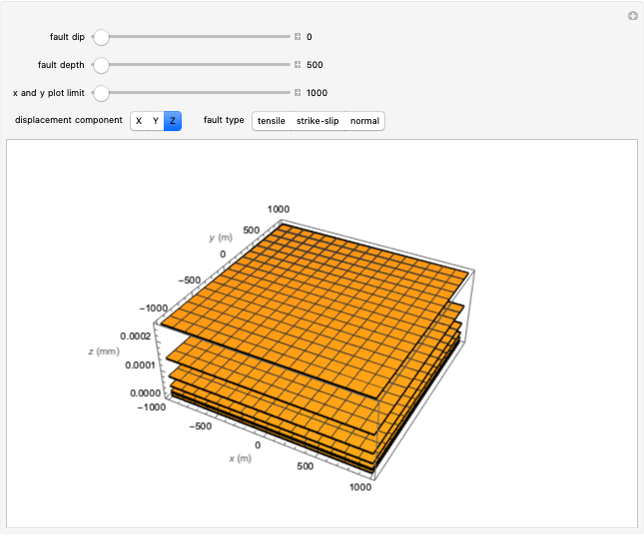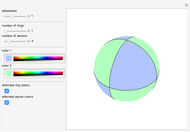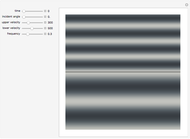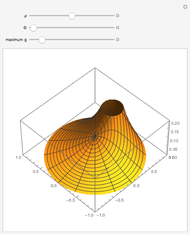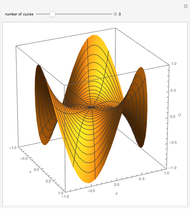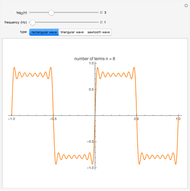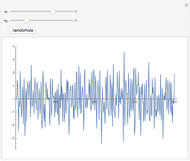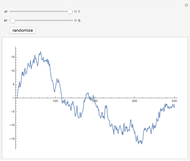Reverberations in Acoustic Layers

Requires a Wolfram Notebook System
Interact on desktop, mobile and cloud with the free Wolfram Player or other Wolfram Language products.
This Demonstration shows the continuous train of reverberation pulses that results from a stack of layers when a plane acoustic wave with delta amplitude impinges on the bottom interface from below. All internal reflections in the bounded layers are taken into account. The sequence of reflected pulses back into the bottom half‐space and the sequence of transmitted pulses into the top half‐space are shown. The solution is tractable only because each layer is assumed to have equal travel time across it, and so the resulting pulses are equally spaced in time. The "number of layers" selection includes the bottom and top half‐spaces. The "number of output points" selection only goes up to 8 because reverberation amplitudes quickly go to zero. Set the impedance of each layer with the individual slider bars. To simulate a vacuum in the top half‐space, one can set its impedance to zero.
Contributed by: David von Seggern (University of Nevada) (March 2011)
Open content licensed under CC BY-NC-SA
Snapshots
Details
This Demonstration is based on Section 8-3 of Claerbout (1985). (Note an important misprint in eqs. 8-3-8, 9, 10: the  should be
should be  .)
.)
This Demonstration is not intended to handle the trivial case of two half‐spaces in contact. A stack of layers is defined such that the bottom and top layers are half‐spaces. The travel time across each internal layer is  unit of time. This is an arbitrary limitation, but it makes the problem tractable. In practice, layers of unequal travel time could be broken into smaller layers wherein the travel times were approximately equal. An acoustic wave with delta pressure amplitude is assumed to impinge on the bottom interface (boundary). The wave reflected into the bottom half‐space is given by the
unit of time. This is an arbitrary limitation, but it makes the problem tractable. In practice, layers of unequal travel time could be broken into smaller layers wherein the travel times were approximately equal. An acoustic wave with delta pressure amplitude is assumed to impinge on the bottom interface (boundary). The wave reflected into the bottom half‐space is given by the  -transform
-transform  (termed
(termed  in Claerbout). The wave transmitted into the top half‐space is given by the
in Claerbout). The wave transmitted into the top half‐space is given by the  -transform
-transform  (also termed
(also termed  in Clearbout). Inverse transforms of
in Clearbout). Inverse transforms of  and
and  give the sequences of pulses due to the reverberations in addition to the primary reflected and transmitted pulses. By their nature, each of the inverse transforms is an infinite series; however, the amplitudes of the resulting pulses decay rapidly with time, and only a few generally need to be plotted.
give the sequences of pulses due to the reverberations in addition to the primary reflected and transmitted pulses. By their nature, each of the inverse transforms is an infinite series; however, the amplitudes of the resulting pulses decay rapidly with time, and only a few generally need to be plotted.
We number the  layers from the top down. Then the impedances of the layers are used to get the reflection and transmission factors at each interface of a downgoing wave with
layers from the top down. Then the impedances of the layers are used to get the reflection and transmission factors at each interface of a downgoing wave with
 ,
,
 ,
,
where  is the impedance and
is the impedance and  1 is the number of interfaces. Corresponding factors for an upgoing wave are
1 is the number of interfaces. Corresponding factors for an upgoing wave are
 ,
,
 .
.
Details of forming the general reverberation sequences from these factors are given in Claerbout. From this formulation, one can see that the impedances only need to be given relatively; thus, slider bar scales from 0 (vacuum) to 1 (rigid) are used for all the impedances. In this Demonstration, only three-layer and four-layer models are allowed. Little or no insight is gained into reverberations by including larger numbers of layers, and the computation time will greatly increase with larger numbers.
J. F. Claerbout, Fundamentals of Geophysical Data Processing: With Applications to Petroleum Prospecting, Palo Alto, CA: Blackwell, 1985.
Permanent Citation






